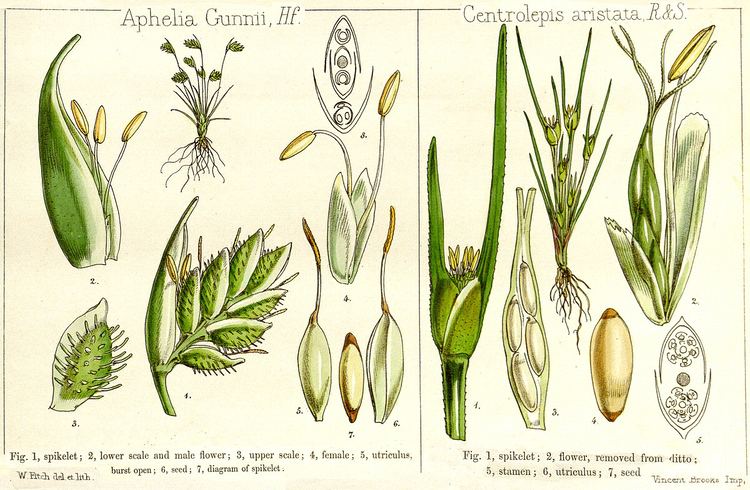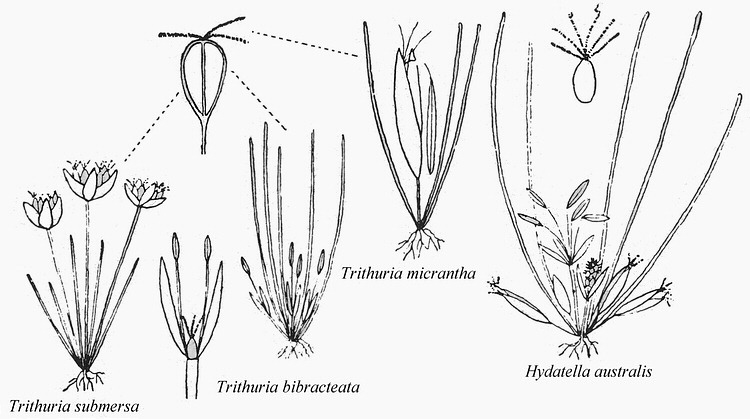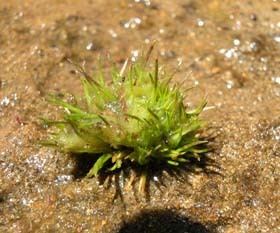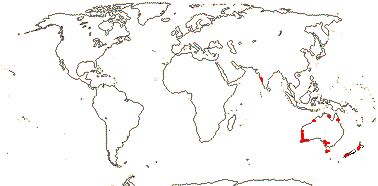Rank Family | Clade Angiosperms | |
 | ||
Similar | ||
Hydatellaceae are a family of small, aquatic flowering plants. The family consists of tiny, relatively simple, plants occurring in Australasia and India. It was formerly considered to be related to the grasses and sedges (order Poales), but has been reassigned to the order Nymphaeales as a result of DNA and morphological analyses showing its closer affinity to basal angiosperms than to the order Poales, to which it bears a superficial resemblance. The family includes only the genus Trithuria with 12 species (Christenhusz & Byng 2016 ). .
Contents

Description

The family consists of ten or more species with substantial variation among them. Plants are submerged and emergent aquatic annuals, rooted in the substrate below the water. They are tiny (a few cm tall) and relatively simple. The simple leaves are concentrated basally around a short stem.

The members of this plant family are monoecious or dioecious and are likely wind-pollinated (anemophilous), water-pollinated (hydrophilous) or self-pollinating (autogamous). Flower-like reproductive units are composed of small collections of minute stamen- and/or pistil-like structures that may each represent very reduced individual flower, so that the reproductive units may be pseudanthia. The non-fleshy fruits are follicles or achenes.
Taxonomy
The family was for many years assumed to be a close relative of the grasses and sedges and was even sometimes lumped under the poalean family Centrolepidaceae. Even as recently as 2003, the APG II system assigned Hydatellaceae to the grass order Poales in the commelinid monocots. However, research based on DNA sequences and morphology by Saarela et al. indicates that Hydatellaceae is the living sister group of the water lilies (Nymphaeaceae and Cabombaceae) and thus represents one of the most ancient lineages of flowering plants. Developers of earlier classifications were misled by the apparently reduced vegetative and reproductive morphology of these plants. As aquatic herbs, Hydatellaceae have environmental adaptations leading to derived characteristics that create a morphological similarity to the more distant taxon. Careful reanalysis of their morphological traits and comparisons with other basal angiosperms have supported this "dramatic taxonomic adjustment". This realignment is now recognized in the APG III system of classification.
The family now includes only the genus Trithuria, which in 2008 was re-defined to include the genus Hydatella.
